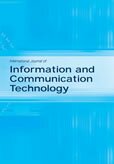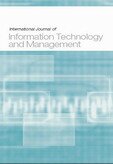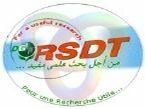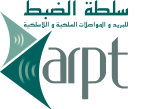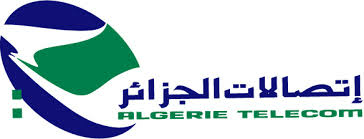KEYNOTES
Section GIS Technology, Delft University of Technology,
The Netherlands
Geo-information technology and systems for emergency management have advanced greatly in the last few years. Systems for early warning, command and control, and decision-making have been successfully implemented in many countries and regions all over the world. Many of these systems can meet requirements for early warning and real-time response, and provide suitable models for elaborated predictions, simulations and visualizations. However, some new paradigms such as 3D modelling and semantics are still insufficiently addressed. It is expected that 3D models can greatly improve situational awareness and enhance spatial analysis and simulations. Appropriate vocabularies and semantics to enrich the spatial information are extremely beneficial in data integration and sharing of information at national and international level as well as for developing of context aware applications. This talk will make an overview on systems for emergency response and will present results of systems based on semantically enriched 3D models.

Sisi Zlatanova is an associate professor and the leader of a research group ‘Geo-information for Crisis Response’ at the GIS Technology section, OTB Research for the Built Environment, Faculty of Architecture and the Built Environment, Delft University of Technology, the Netherlands. She has graduated as a surveyor at the University of Architecture, Civil Engineering and Geodesy, Sofia, Bulgaria in 1983 and has obtained her PhD degree on ‘3D GIS for urban modelling’ at the Graz University of Technology, Graz, Austria in 2000. She is vice chair of OGC SWG IndoorGML, a chair of the ISPRS WGIV/7: ‘3D Indoor modeling and navigation’, 2012-2016 and a member of the Scientific Committee of Integrated Research on Disaster Risk (IRDR). She is author of more than 200 scientific papers and editor and co-editor of 18 books. Her research interests are in 3D geo-information and its applications in emergency response.
A Cross Layer Paradigm for Pervasive Use of
Heterogeneous Wireless Sensor Networks in
Disaster Management
Department of Electrical and Computer Engineering
Illinois Institute of Technology, Chicago
Due to advances in computer/network technologies and emerging ability to embed sensors in VLSI, existing computation and information paradigms have begun to acquire new dimensions. Deployment of a vast array of tiny smart sensors (sensor devices with processors) interconnected over wireless channels are enabling their pervasive use in a variety of defense and commercial applications, such as disaster management, environmental monitoring (e.g. traffic, habitat, security), industrial sensing and diagnostics (e.g. factory, appliances), infrastructures (e.g. power grid, water distributions, waste disposal), and battlefield awareness (e.g. multi-target tracking). While the task of developing and implementing pervasive applications for such a scenario is exciting, it poses tremendous challenges. In this talk we will outline different application areas and discuss research issues related to pervasive and context aware design and management of heterogeneous wireless sensor networks for disaster management, and present results on a cross layer paradigm for designing sensor network applications.

Ashfaq A. Khokhar is the Chair of The Department of Electrical and Computer Engineering at The Illinois Institute of Technology where he also serves at the rank of Professor. Dr. Khokhar received his B.Sc. in Electrical Engineering from the University of Engineering and Technology, Lahore, Pakistan,in 1985, his M.S. in Computer Engineering from Syracuse University, in 1989 and Ph.D. in Computer Engineering from University of Southern California, in 1993. After his Ph.D., he spent two years as a Visiting Assistant Professor in the Department of Computer Sciences and School of Electrical and Computer Engineering at Purdue University. In 1995, he joined the Department of Electrical and Computer Engineering at the University of Delaware, where he first served as Assistant Professor and then as Associate Professor. In Fall 2000, Dr. Khokhar joined UIC in the Department of Computer Science and Department of Electrical and Computer Engineering, and served at the rank of Professor and Director Graduate Studies till Summer 2013. Dr. Khokhar is also chief technology officer of Video Analytica, Inc., a Woodridge, IL-based startup that he founded, and it develops scalable and computationally efficient solutions for multimedia applications, including smart and intelligent video surveillance technologies.
Dr. Khokhar’s research centers on context-aware wireless networks, computational biology, health care data mining, content-based multimedia modeling, retrieval and multimedia communication, and high-performance algorithms. He is considered a leading expert in the area of high-performance solutions for multimedia applications, especially those that are data or communication intensive. He has graduated more than 20 Ph.D. students in the last 10 years. His research is currently supported by multiple awards funded by the National Science Foundation (NSF) and National Institutes of Health. In the recent pastDr. Khokhar’s research has also been supported by the United States Army, the Department of Homeland Security, and the Air Force Office of Scientific Research. The funding level associated with these activities has been well over $10 million to date. Dr. Khokhar has published over 230 technical papers and book chapters in refereed conferences and journals in the areas of wireless networks, multimedia systems, data mining, and high performance computing. He is a recipient of the NSF CAREER award in 1998. His paper entitled "Scalable S-to-P Broadcasting in Message Passing MPPs" has won the Outstanding Paper award in the International Conference on Parallel Processing in 1996. He has served as the Program Chair of the 17th Parallel and Distributed Computing Conference (PDCS), 2004, Vice Program Chair for the 33rd International Conference on Parallel Processing (ICPP), 2004, and Program Chair of the IEEE Golbecomm Symposium on Adhoc and Sensor Networks, 2009.
He is a Fellow of IEEE for his contributions to multimedia computing and databases.
Federal University of Rio de Janeiro, Brazil
"Big data" is a phrase that has captured much attention in Washington, DC, and around the US. Collaboration is an essential feature of any teamwork activity. An emergency response operation usually involves several teams working cooperatively for the purpose of saving lives or properties. No doubt that in emergency situations a well-coordinated teamwork is one of the key factors for the success of disaster relief operations. Collaboration occurs at various levels. There is a natural cooperation among members of response teams working in the field. Collaboration also occurs in command and control activities. Collaboration takes place among citizens and between them and response team members. The work of volunteers is also part of a collaborative environment. This talk addresses the characteristics of these types of collaboration and review the support provided by current and future emergency management systems to enhance the results of a disaster relief operation. It uses the triad communication-coordination-awareness to explain how collaboration can be supported. Examples from several emergency domains will be presented to illustrate the benefits of a supported collaborative work in these contexts.
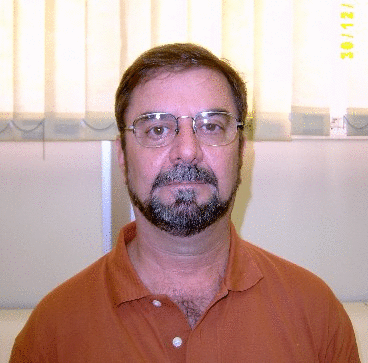
Marcos R.S. Borges is professor of Computer Science at the Federal University of Rio de Janeiro, Brazil. He earned his doctorate in Computer Science from theUniversity of East Anglia, UKin 1986.From 1994 to 1996, he was a visiting research scholar and a member of the Object Technology Laboratory at Santa Clara University, California, USA. Professor Borges has also served as Visiting Professor University of Paris, France (2001) and at the Polytechnic University of Valencia, Spain (2004-2005)..His research interests include Emergency Management Systems, Computer-Supported Collaborative Work, Group Decision Support Systems and Collective Knowledge. Since 2004he has beenworking in theemergency management domain and has publishedthe results on this topic in international conferences and journals such as the Journal of Decision Systems,International Journal of Information Technology & Decision Making, Reliability Engineering and SystemSafety, Group Decision and Negotiation, Information Systems for Crisis Response and Management andJournal of Loss Prevention in the Process Industries.
Earthquake Disaster Prevention, Disaster Prevention Technology Division,
Railway Technical Research Institute, Japan
During the 2011 Great Tohoku Earthquake, Japan, the earthquake early warning (EEW) system operated by East Japan Railway Company successfully controlled the bullet trains before large shakings hit them. This is considered to be one of the significant results achieved by current EEW systems for mitigating the earthquake disaster. On the other hand, these systems still have a number of problems to be solved concerning rapidness, accuracy, and reliability. In this talk, after summarizing a history of EEW in Japan especially for railways, warning logics and configuration of the systems are explained in detail. Furthermore, problems that the current systems are facing and some examples of on-going researches to improve the system performance are illustrated.
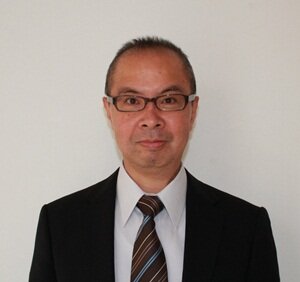
Shunroku Yamamoto Shunroku Yamamoto is a laboratory head of Earthquake Disaster Prevention, Disaster Prevention Technology Division, Railway Technical Research Institute, Japan. He received his doctor’s degree on “simulations of long-period surface waves” from Graduate School of Science and Engineering, Waseda University in 1992, then worked as a research associate / visiting researcher for Waseda University until 1997. From 1997 he had belonged to Association for the Development of Earthquake Prediction where he began his research on earthquake early warning using seismic network of Japan. He was one of the members who had developed the earthquake early warning system of Japan Meteorological Agency. In 2008, he moved to Railway Technical Research Institute. There he has been working as a laboratory head for investigating real-time seismology and developing the earthquake early warning system for railways, especially for bullet trains. He is a member of technical committee on the earthquake early warning system of Japan Meteorological Agency.

